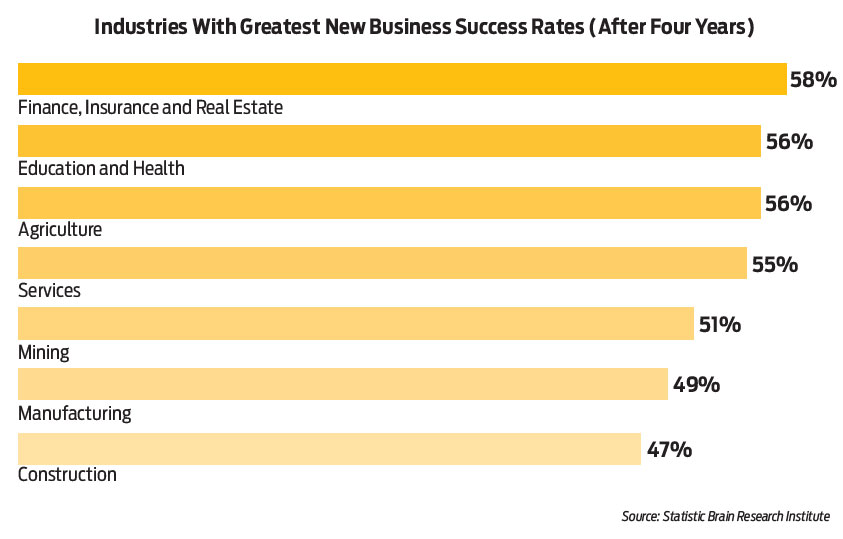Strategy October 05, 2018
Promo Market to Target: Small Businesses
The biggest opportunity for distributors is the millions of small businesses that need your help to grow.
When it comes to business, most think bigger is better. But maybe we should be thinking smaller. Why? Small businesses make up 99.7% of all U.S. firms with paid employees. Small business also comprises 64% of net new private sector jobs and nearly 50% of private sector employment, according to the Small Business Administration Office of Advocacy. (The SBA has a variable definition of what constitutes a small business based on the industry the business belongs in.)

Small business drives business. “We all want the big clients, but it’s small businesses that are the bread and butter,” says Rachel Leone, president and owner of Leone Marketing Solutions (asi/251966) in Hingham, MA. “Right now I’m doing about 20 projects for smaller companies and two for big clients.”
At Silver Spring, MD-based Summit Group (asi/339116), Michael Londe primarily works with medium to large businesses. But that often provides an entry to small business clients because “most often, one of our clients has moved there and brought us along with them,” says Summit’s director of sales. “Conversely though, we’ve had clients leave small businesses and go to larger ones and bring us with them.”
Don't Miss: Is a Small Order Worth Your Time?
However, there’s no denying bigger companies have larger marketing budgets, making them appealing prospects to target. “The same amount of energy and effort (if not more) goes into a client that spends $5,000 a year as a client that spends $50,000,” points out Kevin Scharnek, president of 14 West LLC (asi/197092) in Waukesha, WI.
These testaments highlight a simple fact: there are definitely pros and cons to working in this space, says Nina Bloomstein Shatz, a Sharon, MA-based director of brand development for HALO Branded Solutions (asi/356000). And while it's worth examining both sides, know that small businesses need distributors just as much as the majority of distributors need small businesses. “Smaller companies may need our services more than anyone else,” she says. “We need to show them how incredible the ROI from promo can be, and how it can help them grow their business.”
Pro: Access to Decision-Makers
The biggest advantage of working with small businesses is you usually deal with the ultimate decision-maker, says Danny Friedman, president of Danny Inc., and vice president of Northbrook, IL-based Added Incentives. Larger clients can have lots of chains of command and more red tape, and may have to put projects out to bid, he notes.
Distributors should make it a goal to have small companies aware of you early on, Friedman says, especially because they need to be educated on products and services you might offer. It’s even more important because these companies usually don’t have marketing departments. “The best thing a distributor can offer is their expertise and knowledge; in effect, you become their marketing department,” says Friedman. “Point out how you will make their life easier – all the client has to do is be the decision-maker,” says Friedman.
The first point of contact should be the owner, office manager or executive assistant. Typically, these companies have one person wearing multiple hats, says Londe. They’re often receptive to discussing a complete marketing plan, so there’s an opportunity to share expertise in multiple facets of marketing and assist the small business with their needs, he notes.
But there can be a learning curve for these businesses. “Often they go online and just look for pens with logos,” says Shatz. “It’s our job to help these companies use promotional merchandise and apparel as a marketing tool to help grow their businesses.”
Asking the right questions is critical. “It takes more effort to explain why they shouldn’t just order pens – we need to help these businesses think deeper,” she notes. Ask what they’re trying to achieve. Who is their audience? Do they have a website or social media presence? Do they need their phone number and/or website to be accessible on the item? “If not, we need to be able to assist the client to be successful in this realm,” adds Shatz.
“Be honest and provide what the client needs, not what you want to sell them,” notes Londe. “If you’re not the best resource for something, tell the client and guide them where to go.”
Con: Small Budgets
A key disadvantage of smaller businesses is they are very budget conscious, which means the sales volume may not come close to that of a larger company that has more money to spend. And while the margins on orders may be higher than for those of bigger business clients, the order sizes will usually be smaller.
“The greatest product you’re selling is yourself – you need to be a detective and researcher and find the product that gives the client the most bang for its buck,” says Friedman. “You need to hone in on products with high perceived value that don’t cost a lot.”
Leone is always on the lookout for special promos and deals, and reaches out when she knows a product and special pricing might be a good fit for a particular small-business client. “I am proactive all the time,” she says. “If a client mentions they may need journals in about six months and I see a deal, I’ll let them know and help them save money.”
But not every small-business client is rummaging through the discount bins. Leone has construction clients who tend to order “lots of high-end leave-behind” thank-you gifts for their clients upon completion of a project; she’s sold logoed bottles of wine, cutting boards and S’well-style water bottles to these clients.
Pro: Future Growth
Small businesses don’t stay small forever. “If you get in on the ground floor, are loyal and give them the same customer service you give a large organization,” there are distinct benefits to working with these accounts, says Shatz. “I’ve dealt with smaller companies that have grown and grown and taken me along for the ride. They see me as a partner,” she says. “If you’re an integrated part of the team, you grow with them.”
Distributors have countless examples of small companies that took off and expanded their buying. One of Londe’s telecom clients started as a regional sized company, underwent a name change and ultimately became a national company. As the company evolved, Londe provided an increasing array of services for the company, including creation of an online store, a brand launch and two re-brandings.
When Friedman started working with one financial consulting client, the company was seeking to get their name out there at trade shows, farmers fairs and other local events. Initially, he provided inexpensive items like pens, chip clips and microfiber cloths. Eventually the company got bought out, but because Friedman had established credibility with them, he was introduced to the buyer’s marketing person and continues to serve the account. “Their budgets and quantities got bigger,” he says, “so my orders now have more commas and zeroes.”
The types of products will change too. “If a company is growing, you may transition from inexpensive trade show giveaways to more sophisticated offerings, such as higher-end gifts for clients, or internal gifts for employees,” says Londe.
Other opportunities will arise as well – promoting a new logo, launching a new product or hiring new employees, says Leone. Companies will often give new employees gifts as part of the onboarding process. She typically does searches of companies in her geographic area that are hiring and presents onboarding gift ideas.
The key is identifying which small businesses are likely to grow. The restaurant and hospitality industry is a big buyer of promo and according to Shatz is a good small-business category to target. “It’s a very volatile industry, but if you hit it right, they can grow and franchise,” and there are ample opportunities to help them improve their business, she notes. For example, polos for staff members can be a good entry point before introducing coasters, barware, pens to sign checks and more.
Success Stories

One key to succeeding with small businesses is identifying the ones that will grow and pay off handsomely. Knowing which industries have the greatest success rates is a step in the right direction.
Con: Changing Decision-Makers
The downside to a small company getting bigger is that as they grow, they’re likely to hire their own marketing coordinators and HR staff, which can make a distributor’s role precarious. “It’s like dating the unpopular boy, and all of a sudden he has a growth spurt over the summer and gets a lot of attention,” says Shatz. “He has more opportunities and no longer is interested in you.”
While this may be frustrating, she advises keeping the line of communication open: “Let the small company explore, but don’t disappear. They may get burned and come back to you, because they know you’ve moved heaven and earth for them to help them get to this point.”
This happened to Summit Group’s Londe when an important client changed decision-makers. “We had worked our way in, and grown this transport company into a substantial client,” he recalls. Every few years the decision-maker would change, but one year an unethical one was put in charge. “He stole ideas, bid them out and took the lowest bid, which was typically not the one who had come up with the idea,” says Londe. “We backed off from working with him.” However, once this decision-maker moved on, the client invited Londe and his team back in. “They knew the value we brought.”
Pro: Provide a Good Test
The stakes are surely higher with large clients, but small businesses provide challenges that help distributors (newcomers to the industry and veterans) improve. “You can learn so much on the job about distributors and suppliers and successfully delivering an order,” says Leone. “Everything is last-minute with this group, and each employee wears so many hats,” that it’s great experience for handling all kinds of situations, she notes.
Leone adds: “When I start working with a small client, I get tested all the time.” Small orders to start are common so the business can see how a distributor delivers and excels in customer service. “This is more common with small businesses than larger ones,” Leone says.
As distributors get more experience, their ratio of small and large companies is likely to shift. “In the beginning, your book of business might be 90% small business, but as you get more educated and ingrained, that can change,” says Shatz, whose account ratio is now 80% large established companies and 20% small business. “I like to keep the pipeline open and spend time with smaller companies. It pushes me to not get lazy.”
As you get bigger, it still pays to remember the people who helped you get there – the small businesses. “The little guy’s money,” says Shatz, “is just as green as the big guy’s.” Jean Erickson is a contributing writer for Advantages.
Jean Erickson is a contributing writer for Advantages.
